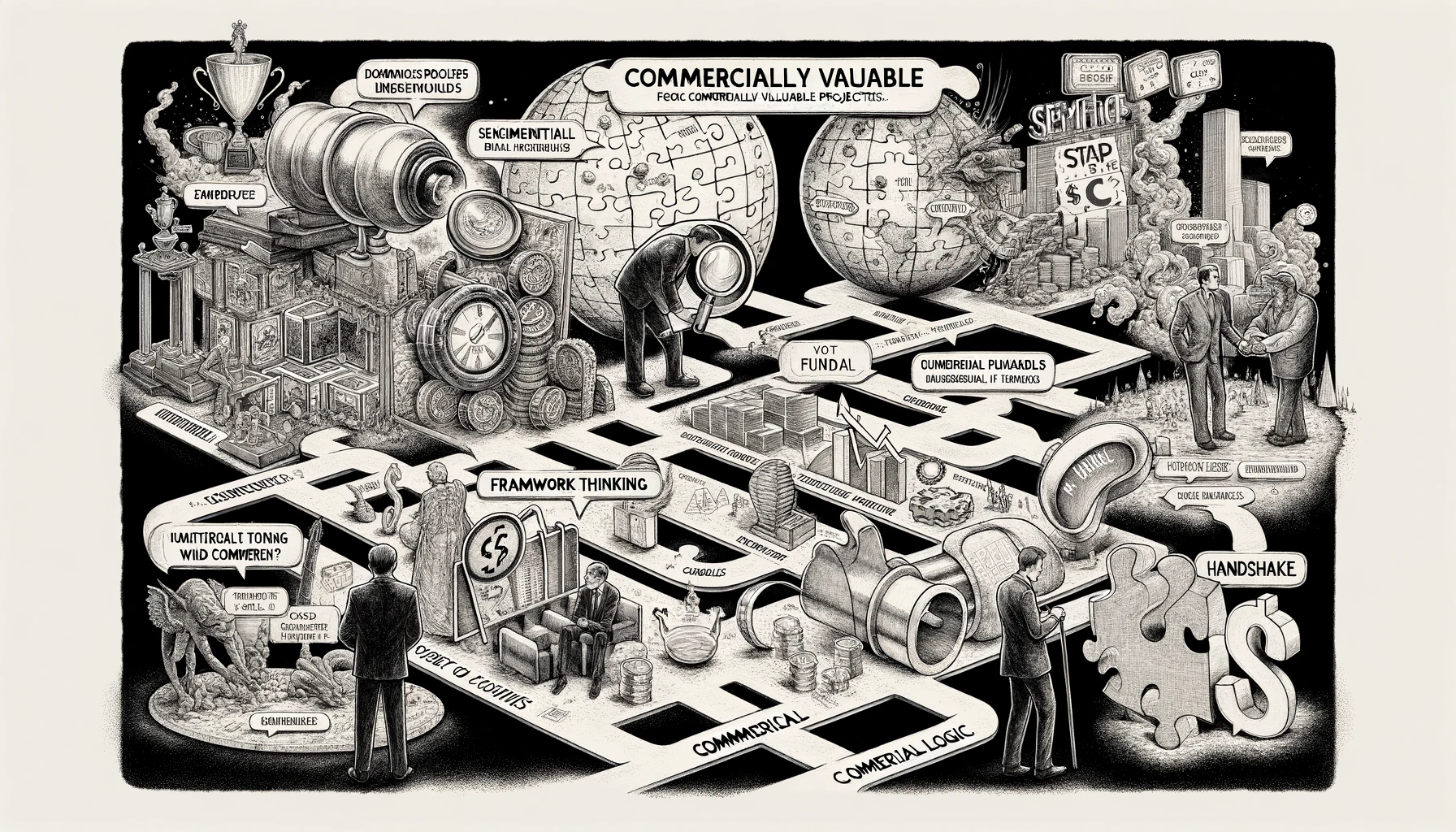Summarizing the Views:
First and foremost: The exceptional experiences and achievements of key individuals.
Second in importance: Whether the key individuals possess a structural cognitive understanding of the world, business, or life.
Thirdly: The current project's business logic itself.
Lastly: The relationship between you and them!

Introduction
Investing success transcends the analysis of financial statements; it involves a deep understanding of the team behind it, their way of thinking, the project's business model, and the relationship between both parties. This is where the concept of investment framework thinking comes into play, facilitating wiser investment decisions through a comprehensive consideration of various factors. This article delves into these considerations and how they collectively assist investors in building a more robust investment portfolio.
Part One: The Experiences and Achievements of Key Individuals
Overview
Evaluating investment opportunities begins with a focus on key figures: founders, CEOs, and their team members. Their experiences and achievements are crucial to the project's success. Teams with rich experience and significant accomplishments are more likely to lead projects through challenges toward long-term success.
Key Analysis
-
Value of Experience: Team members with rich experience are better at foreseeing challenges and opportunities and navigating complex business environments. Their backgrounds provide valuable learning opportunities, whether from successes or failures.
-
Indicative Power of Achievements: Past accomplishments of team members directly reflect their capabilities and potential, demonstrating their ability to replicate or even surpass previous successes in new projects.
Part Two: Structural Cognitive Thinking
Overview
Structural cognitive thinking is the ability to identify patterns, establish connections, and predict future trends within complex systems. This mode of thinking is crucial for investors and entrepreneurs, enabling a deep understanding of the essence and direction of development.
Key Thinking Patterns of Key Individuals
-
Holistic View: Adopting a macro perspective to examine issues, capable of analyzing and solving problems against a broad backdrop.
-
Pattern Recognition: Skilled in identifying regularities and patterns from data and phenomena, predicting future directions.
-
Systemic Thinking: Understanding the interconnectedness and mutual influence of things, considering the systemic effects of decisions.
Part Three: The Business Logic of the Project
Overview
Understanding and assessing the project's business logic is critical to investment decision-making. Business logic encompasses the company's business model, market positioning, sources of income, growth potential, competitive advantage, and sustainability.
Key Points for Evaluation
-
Market Demand: Does the project address a continuous market need? Is its solution superior?
-
Competitive Advantage: Does the project have a clear competitive edge, such as in technology, brand recognition, or operational model?
-
Profitability Model and Scalability: Is the project's profitability model clear and viable? Does it have the potential for market expansion?
Part Four: The Relationship Between Both Parties
Overview
Investment success depends not only on the project itself or its team but also greatly on the relationship between investors and entrepreneurs. The quality of this relationship significantly impacts the investment outcome.
Importance of Building Relationships
-
Trust and Transparency: Trust, built on transparent and open communication, ensures both parties have a clear understanding of the project's current status and future direction.
-
Common Goals: Strong relationships are built on shared visions and objectives.
-
Support and Guidance: Investors offer more than just capital; they also provide resources, networks, and expertise to help the project overcome challenges.
Conclusion
Exploring the experiences and achievements of key individuals, structural cognitive thinking, the project's business logic, and the relationship between investors and entrepreneurs from four dimensions, we understand the complexity and importance of investment framework thinking. This comprehensive evaluation approach helps investors make wise decisions in the fluctuating market, key to achieving success.